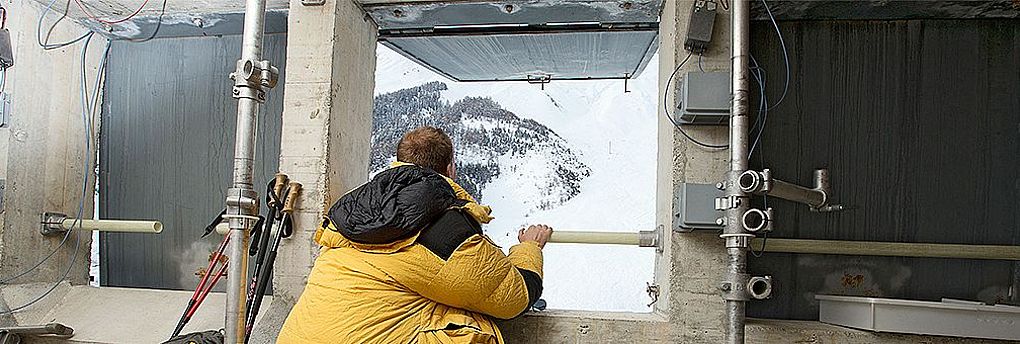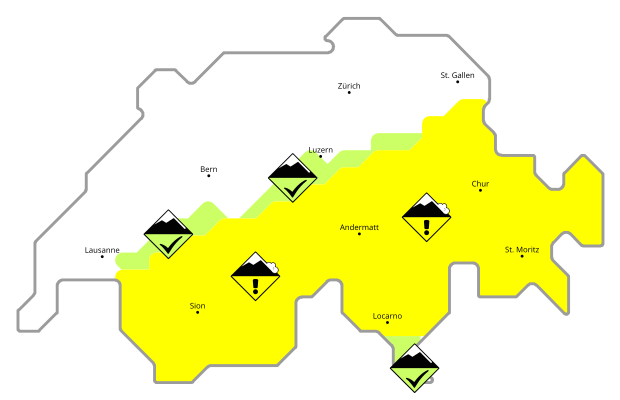
Experimenting
Scientists from the WSL do more than simply observe nature in order to understand how it works. Through experiments, they are able to create precisely defined conditions, thereby enabling them to answer important questions. Sometimes these experiments extend across entire mountainsides.
At the Stillberg site in Davos, for example, our scientists have planted thousands of trees in order to study the development of the treeline. In Valais, they trigger major avalanches which are then monitored by instruments and cameras as they come thundering down into the valley. In the Pfyn forest in Valais, they irrigate entire swathes of forest in order to examine the effects of increasing drought.
Experiments are at the heart of scientific research. Taking the question (hypothesis) as the basis, our researchers vary the conditions under which a phenomenon occurs. If, for example, we want to know whether Douglas firs could supplant native forest trees in Swiss forests, we plant a large number of young Douglas firs next to native tree seedlings under different light and precipitation conditions. Which type of sapling grows the most only becomes apparent following complex mathematical analyses (statistics).
Masses on the move
An exceptional feature of the WSL is our instrumented field sites for mass movements, which are the only ones of their kind in the world. This is where our researchers can observe avalanches, debris flows and hillslope debris flows in the field on a realistic scale. State-of-the-art sensors developed by the WSL measure a wide range of variables, such as flow velocity, impact pressure and shear stress.
The data provides a better understanding of the processes involved in individual natural hazards. They are also entered into various computer models (e.g. RAMMS), which help practitioners and researchers evaluate natural hazards and develop hazard maps and safety concepts.
For the most part, though, the experiments are much less spectacular: in one spot, a doctoral student gathers specific plants on mountaintops in order to study the effect of competition; in another location, a Master's student subjects saplings with and without associated fungi to drought, and a research assistant heats snow samples in the cold laboratory and studies them using micro-computed tomography.
We also conduct experiments that address sociological questions, for example to test the conditions under which forest managers take both economic and ecological aspects into account.
